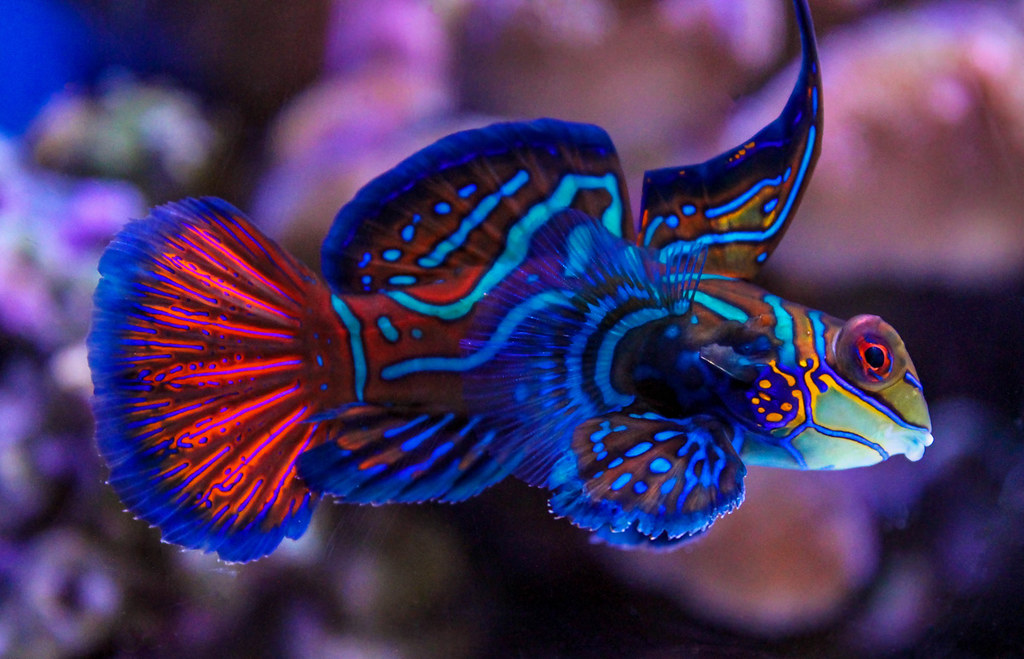Setting up a harmonious aquarium requires more than just selecting beautiful fish. Choosing the right tank mates ensures a peaceful environment, prevents aggression, and supports the overall health of your fish. Incompatible species can lead to stress, injuries, or even fatalities. So, how do you determine which fish can live together peacefully?

In this article, we’ll explore the key factors to consider when selecting compatible aquarium fish, common mistakes to avoid, and recommendations for ideal fish combinations.
1. Understanding Fish Compatibility
Why Compatibility Matters
Fish compatibility is crucial because:
- Aggressive species may attack or eat smaller, peaceful fish.
- Different fish have unique environmental needs (water parameters, diet, swimming space).
- Some fish may outcompete others for food, leading to malnutrition.
A well-balanced aquarium promotes healthy fish behavior, reduces stress, and enhances the beauty of your aquatic ecosystem.
Factors That Determine Compatibility
When choosing tank mates, consider these essential factors:
A. Temperament and Behavior
Fish can be:
- Peaceful – Suitable for community tanks (e.g., tetras, guppies, corydoras).
- Semi-aggressive – Require careful selection of tank mates (e.g., angelfish, gouramis).
- Aggressive – Best kept alone or with similar species (e.g., cichlids, bettas).
B. Tank Size and Space Requirements
Overcrowding leads to stress, territorial disputes, and poor water quality. Always consider:
- The adult size of the fish.
- Their swimming behavior (top, middle, or bottom dwellers).
- The number of hiding spots available.
C. Water Parameters
Different species thrive in specific water conditions. Compatibility depends on:
- Temperature – Tropical fish need warmer water (75-82°F), while cold-water species prefer cooler environments.
- pH Levels – Some fish prefer acidic water (pH 6.0-6.5), while others require alkaline conditions (pH 7.5-8.5).
- Water Hardness – Some species need soft water, while others thrive in harder water.
Matching water parameters helps keep all fish healthy and reduces stress-related illnesses.
D. Diet and Feeding Habits
Mixing fish with different diets can cause problems. Consider:
- Carnivorous fish may eat smaller tank mates.
- Herbivores might nibble on live plants.
- Bottom-dwellers need sinking food, while surface feeders require floating flakes.
Ensuring all fish can access their preferred food prevents competition and ensures proper nutrition.
E. Activity Level and Swimming Zone
Fish occupy different tank levels:
- Top-dwellers (e.g., hatchetfish, guppies).
- Mid-level swimmers (e.g., tetras, angelfish).
- Bottom-dwellers (e.g., plecos, corydoras).
Mixing fish that occupy different zones reduces competition and creates a visually appealing aquarium.
2. Common Mistakes When Choosing Tank Mates
1. Mixing Aggressive and Peaceful Fish
Example: Keeping bettas with fin-nipping fish like tiger barbs.
Aggressive fish may attack smaller, more passive species, leading to injuries or stress.
2. Ignoring Tank Size
Example: Placing goldfish in a small tank with other fish.
Some fish need a lot of space, and overcrowding can lead to poor water quality and territorial disputes.
3. Overlooking Water Parameter Requirements
Example: Keeping guppies (who prefer alkaline water) with discus (who need soft, acidic water).
Mismatched water conditions can cause illness and shorten fish lifespans.
4. Forgetting About Breeding Behavior
Example: Housing cichlids in a community tank.
Some species become extremely territorial when breeding, which can disrupt tank harmony.
5. Mixing Fast and Slow Swimmers
Example: Placing danios with fancy goldfish.
Fast swimmers may outcompete slower fish for food, leading to malnutrition.
3. Best Fish Combinations for a Peaceful Aquarium
A. Community Tank (Peaceful and Colorful)
Perfect for beginners, a community tank includes fish that coexist well.
Ideal species:
- Neon tetras
- Guppies
- Mollies
- Platies
- Corydoras catfish
- Otocinclus (for algae control)
Key considerations:
✔ Keep groups of tetras or corydoras (they are social).
✔ Provide hiding places with plants and decorations.
B. Semi-Aggressive Tank (Requires Careful Selection)
Semi-aggressive fish need tank mates that can hold their own.
Ideal species:
- Angelfish
- Gouramis
- Swordtails
- Rainbowfish
- Plecos
Key considerations:
✔ Avoid keeping angelfish with small fish like neon tetras (they may be eaten).
✔ Provide ample swimming space.
C. Cichlid Tank (For Experienced Aquarists)
Cichlids are territorial and aggressive, but they can coexist with proper planning.
Ideal species:
- African cichlids (stick to one lake type – Malawi or Tanganyika).
- Oscar fish (in a large tank).
- Firemouth cichlids.
Key considerations:
✔ Provide caves and rocks for territory.
✔ Keep similar-sized cichlids together to reduce bullying.
D. Nano Tank (Small Aquarium Setup)
For small tanks (10-20 gallons), choose fish that don’t require much space.
Ideal species:
- Betta fish (kept alone or with snails/shrimp).
- Chili rasboras.
- Ember tetras.
Key considerations:
✔ Avoid fin-nippers if keeping a betta.
✔ Use live plants to create hiding spots.
4. Additional Tips for a Peaceful Tank
1. Provide Plenty of Hiding Spots
Adding caves, plants, and driftwood helps reduce stress by giving fish their own space.
2. Introduce New Fish Slowly
When adding fish:
✔ Use a quarantine tank to check for diseases.
✔ Introduce new fish gradually to reduce aggression.
3. Monitor Behavior Regularly
Watch for signs of aggression, stress, or illness. If a fish is being bullied, consider rehoming it or rearranging the tank layout.
4. Keep a Balanced Male-to-Female Ratio
In livebearer species like guppies and mollies, males can chase females excessively. Keeping a 1:2 male-to-female ratio reduces stress on females.
5. Maintain Good Water Quality
Regular water changes, proper filtration, and monitoring water parameters keep all fish healthy and stress-free.
5. Conclusion: Creating a Harmonious Aquarium
Choosing the right neighbors for your aquarium fish requires research and planning. By considering temperament, tank size, water parameters, and diet, you can build a balanced and peaceful aquatic environment.
Key Takeaways:
✔ Match fish with similar water needs.
✔ Avoid mixing aggressive and peaceful species.
✔ Provide plenty of hiding spaces and swimming room.
✔ Monitor behavior and introduce new fish carefully.
A well-planned aquarium not only ensures happy fish but also enhances the beauty of your home. With the right combination of tank mates, you can enjoy a thriving and harmonious underwater world!



















